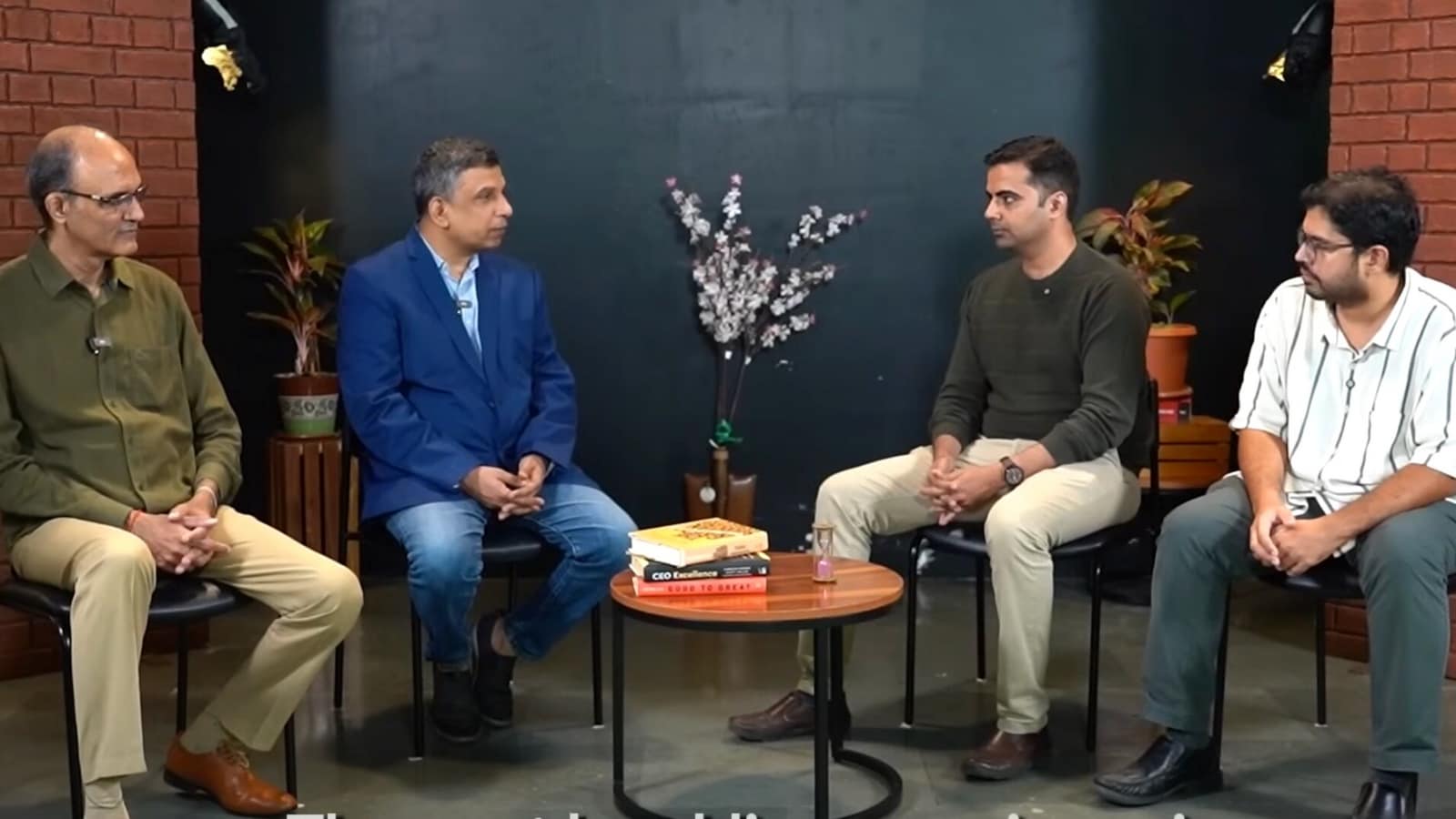Effective financial planning includes defining financial goals and drafting out an investment plan to meet these goals. This is essential for achieving financial stability and building a strong foundation that lets you work towards meeting your financial commitments, both long term and short term.
In Episode 5 of Let’s Mint Money, presented in collaboration with Groww Mutual Fund, Neil Borate, Editor, Personal Finance at LiveMint and Jash Kriplani, Senior Assistant Editor at Mint Money (Personal Finance), spoke to Mumbai-based Kartik Sharma, Group Chief Executive Officer (CEO) of Omnicom Media Group, who has achieved 95 per cent of his retirement corpus with 17 years of disciplined investing. They were also joined by Kartik’s financial advisor Suresh Sadagopan, Founder of Ladder 7 Financial Advisories.
Watch the full episode here,
Sharma started his financial planning journey back in 2007 when he first met with a registered investment advisor. “My financial planner, Suresh from Ladder Seven, back in 2007 and that’s when I understood the entire concept of what financial planning really was. The journey began almost 12 years after I started working. If life gave me another opportunity to go back, I would have started it much earlier,” he said. Sharma is the only earning member of the family, which includes his wife and college-going son.
Stock Market or Gambling?
Back in the day, he recalled that investing into stock markets was seen as gambling. Instruments like real estate, fixed deposits and gold were popular. There was no real knowledge about financial products amongst the common man. He was also in his mid-30s when retirement seemed like a very distant life event.
Before Sharma met Sadagopan, his savings were largely lying uninvested in his bank accounts and in some amateur exposure to stock markets. Sadagopan said he credits Sharma for 98 per cent of the success he has seen – he has been regular and disciplined with his investments, keeps expenses in check and he doesn’t see his portfolio on an every day basis.
“There is no magic that we do as financial advisors. We need somebody to trust us. By the very model of investment advisory, we are fiduciaries. So, we do what is in the client’s best interest. Number two, they have to be disciplined and regular about it and not really worry too much about the returns. Returns are absolutely essential for somebody to achieve their financial goals,” Sadagopan.
The market has done its magic for Sharma. “What we have done is we have tried to simplify the portfolio, make it manageable and appropriate for his family situation. Over a period of time, we have traveled far enough, Sadagopan further said.
Goal-based Investing
Sharma’s present portfolio is a perfect example of goal-based investing with a diversified mix of 74 per cent equity and 26 per cent debt. In the equity portion, there is about 34 per cent each allocated towards large caps and mid caps, another 15-16 per cent in international funds. The debt portion comprises Employee Provident Fund (EPF) and some debt mutual funds with enough provisions kept for any short-term needs.
With capital markets on a stellar bull run, there was temptation to take a fast ticket to wealth creation by putting money into small caps. But, Sharma kept away. He has almost no exposure in small caps. “Intuitively, I understood that if you keep on changing your portfolio to the next shiny thing, possibly you are not going to make any money. The second thing which investors should keep in mind is taxes, which can also impact earnings,” Sharma said.
He is a firm believer of the fact that nobody has the superpowers to predict Capital markets one hundred per cent. So, investors must focus on what is under their control – the money to put in and the time to stay invested for. He has had very limited redemptions over the last so many years. He had set goals to buy a home, a vehicle, provide for his son’s education along with smaller goals of annual family vacations.
No Credit Cards
Over the years, credit card companies, banks and brokers hate him. “It may sound difficult for most people, but I don’t have a single credit card and that allows me not to buy things in an impulse. Banks don’t like me simply because they are not able to sell their credit card to me and because I don’t keep my money idle for long. After meeting my expenses and keeping some money for small expenses, everything needs to be invested. I don’t work on tips, so brokers don’t find any fancy in me,” Sharma said.
He also has a family health cover and a life insurance from his employer, which he thinks is sufficient. “Insurance is the most wrongly sold product – it is not an investment product. My advice is please buy term insurance and don’t waste money on all the fancy formulas. They won’t even beat inflation,” he further added.
Talking about how he planned to meet Sharma’s retirement goals, Sadagopan said: “One of the things which Karthik wanted to see was a scenario where he would retire at 42. We planned it in a way that he could have retired, had he kept the expenses under wraps. He was doing very well in his career and wanted to continue but he could have retired if he wanted to. He can still do so any day.”
The advisor offered a handy tip to everyone planning to send their children overseas for higher education. “We generally tell our clients not to send their children out at the age of 17-18 years. If they really want to, they can go for post-graduation. We saved almost ₹2-2.5 crore in this process,” Sadagopan said.
Sharma concluded the session with some tips for investors who are looking at making some money in the bull run. “First, start early in your journey, as early as you can – even in your teens if your parents can support it. Stay away from FNO as much as possible. I personally prefer simple products over complex ones and I am also a prime example of consistency. I am a great believer in the India story so stay invested. Markets will go up and down – you stay invested to gain from the power of compounding. And, if you can’t do it yourself, find a financial advisor like Suresh,” he said.
Here is what Varun Gupta, CEO of Groww Mutual Fund, has to say about Kartik Sharma’s approach: “Kartik Sharma’s disciplined approach has positioned him well for his financial goals, but simplifying and refining his portfolio could make it even more effective. Consolidating into fewer high-quality funds, exploring thematic investments, and enhancing debt allocation for liquidity can improve both growth potential and flexibility. As retirement nears, tools like a Systematic Withdrawal Plan (SWP) can ensure steady cash flow while keeping the core corpus intact. Small, thoughtful adjustments can go a long way in aligning his portfolio with his evolving needs.”
Disclaimer: Lets Mint Money is a Mint editorial IP, sponsored by Groww Mutual Fund
Catch all the Instant Personal Loan, Business Loan, Business News, Money news, Breaking News Events and Latest News Updates on Live Mint. Download The Mint News App to get Daily Market Updates.
MoreLess










Leave a Reply